Photo Timeline: Celebrating 75 Years of Ducks Unlimited
_Seventy-five years ago this month, a small group of avid waterfowlers took bold action to help restore waterfowl populations devastated...
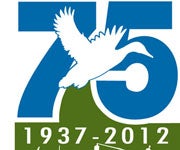

Ducks Unlimited
_
The new organization would proceed with the preservation of unspoiled northern breeding grounds through cooperation with provincial and Dominion officials. Restoration of southern areas would be accomplished by selection and development of local projects after careful choice of the most suitable sites. Funds with which to support the work are to be obtained entirely through contributions from sportsmen in the United States–those who are the beneficiaries of the wild duck crops produced in Canada. “Ducks Unlimited” will be the name of the new Canadian foundation._ The description may have been dry, but the concept was revolutionary and would ultimately prove to be the genesis of our modern, sportsmen-based conservation model. A year after outlining their plan, the dream of Knapp and his colleagues became a reality. Ducks Unlimited, Inc.–the U.S.-based entity that would serve to gather and disperse funds–was incorporated on January 29, 1937, in Washington, D.C. Ducks Unlimited Canada, the entity that would actually carry out the founders’ ambitious plan, was incorporated shortly thereafter in Winnipeg, Manitoba, on March 10. The rest, as they say, is history. Ducks Unlimited has grown from those ambitious yet humble beginnings to become the largest sportsmen-based conservation organization on the continent and the single most important force for wetlands conservation and policy in the nation. But beyond that, DU is also tradition, a millions-strong, multi-generational tribe of like-minded individuals who are forever linked by the dual bonds of their love for waterfowling’s grand traditions and their fervent desire to see those traditions continue into the future. That is what makes DU so unique. To generations of waterfowl hunters, DU’s mission and its principles are the embodiment of that core philosophy, that melding of conservation ethos and hunting tradition, and perhaps most importantly, the knowledge that the two are forever and inextricably tied. For millions of waterfowlers, DU simply IS waterfowl hunting, and always will be.
**
Click through this gallery for a photographic timeline of the past 75 years of Ducks Unlimited history.**

Dust Bowl
Dust Bowl drought grips prairies; duck populations plummet.

First duck stamp
President Franklin D. Roosevelt signs the Migratory Bird Hunting and Conservation Stamp Act into law. First duck stamp, designed by Pulitzer-prize winning editorial cartoonist, Jay N. “Ding” Darling, issued.

Duck season
Duck season is curtailed to 30 days and the harvest of once-abundant species such as canvasbacks, redheads, and wood ducks is prohibited.
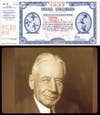
Ducks Unlimited is incorporated
Ducks Unlimited is incorporated in Washington, D.C., on January 29. Insurance and publishing mogul Joseph P. Knapp is the driving force behind the creation of More Game Birds and eventually Ducks Unlimited, though he was never an official board member or involved in day-to-day operations.
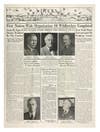
DU Canada
DU Canada launches first project at Big Grass Marsh in Manitoba. Headline of inaugural issue of the Ducks Unlimited quarterly reads “First Nation-Wide Organization of Wildfowlers Completed.”

Duk-A-Nikel fundraising
DU launches Duk-A-Nikel fundraising campaign.

Eddie Bauer
DU launches a campaign with Eddie Bauer to collect waterfowl down to line aviators jackets, pants, parkas, and sleeping bags for the war effort.

Wisconsin DU State Chairman Charles “Snick” Gross
Wisconsin DU State Chairman Charles “Snick” Gross (left) of Green Bay accepted a donation from legendary Green Bay Packers coach Curly Lambeau.

Producer Edgar Monsanto Queeny
Edgar Monsanto Queeny produces the film Mike, featuring his beloved Labrador retriever, to be shown at DU dinners. DU tops $500,000 fundraising mark.
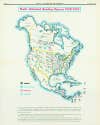
Duck Hunting Land
DU’s autumn 1958 quarterly ran this full-page color map of banding returns from the previous two decades to illustrate “how DU projects in Alberta, Saskatchewan and Manitoba have produced waterfowl for sportsmen the length and breadth of the United States.”
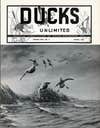
Ducks Unlimited magazine
DU changes format of its quarterly publication, launches the modern Ducks Unlimited magazine.

Bing Crosby
Engineering Milestone: More than 1 million cubic yards of earth moved on DU projects. Movie icon Bing Crosby stars in DU film The Wetlanders.

Gun of the Year program
DU launches Gun of the Year program. Remington issues a special version of its classic Model 1100 autoloader to commemorate DU’s completion of 1,100 wetland projects in Canada. A limited edition of the gun was made available only through DU events. Ducks Unlimited magazine goes to a bimonthly publishing schedule. DU launches Greenwing program in 1973 to recruit and inspire the next generation of waterfowlers to support wetlands conservation. Today, DU has more than 50,000 Greenwing (17 and younger) members.

national event merchandise package
With the rapid growth of the event system in the early 1970s, DU offers national event merchandise package, including art prints and shotguns as well as smaller items.

DU President Peter Coors
DU launches its U.S. habitat program. DU President Peter Coors (center) joined DU Canada President W. Jack McKeag (left) and DUMAC National Vice President Eric W. Gustafson at the dedication of North Dakota’s Lake Arena Project, the first completed by DU in the United States.

Louisiana DU chapters
DU membership reaches 580,000, with 3,700 committees nationwide. Funds raised by Louisiana DU chapters are used to repair hurricane damage on the 8,000-acre Marsh Island State Waterfowl Refuge. Among the many DU supporters who attended the project dedication were (from left) Kell Mcinnis III, Charles R. Sonnier, DU President Hazard Campbell, J. Burton Angelle, Richard House, and Frank Williams.

Matthew B. Connolly Jr.
Matthew B. Connolly Jr. is appointed executive vice president. Shown here: Matt Connolly (center), shown with President George H. W. Bush (left) and DU President Harry D. Knight, succeeded Dale Whitesell as executive vice president.

North American Wetlands Conservation Act
President Bush signs the North American Wetlands Conservation Act into law on December 13. Sponsored by Senate majority leader George Mitchell of Maine, the act made federal matching funds available for wetland restoration in the United States, Canada and Mexico.
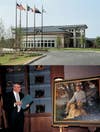
William B. Dunavant Jr.
DU moves its national headquarters from Chicago to Memphis, Tenn. The generosity of prominent businessman William B. Dunavant Jr. was instrumental in DU’s decision to relocate to Memphis.

Wetlands for Tomorrow
DU launches Wetlands for Tomorrow, the largest conservation campaign in history. (WFT image and stock habitat image)

Hal B. Howard Jr.
Hal B. Howard Jr. (center) presents Nash Buckingham’s legendary shotgun, “Bo Whoop,” to DU President John Pope (left) and Chairman of the Board Bruce Lewis at DU’s 2010 national convention in Grapevine, Texas.

DU 75th Anniversary
Ducks Unlimited celebrates its 75th Anniversary. More than 12 million acres conserved. More than 680,000 members and more than 1 million supporters.
_Seventy-five years ago this month, a small group of avid waterfowlers took bold action to help restore waterfowl populations devastated by drought and wetland drainage. Led by printing magnate Joseph Palmer Knapp and other members of the More Game Birds in America Foundation, these conservation pioneers founded a new organization with the singular mission of protecting and restoring wetlands in Canada, where the majority of the continent’s waterfowl are raised.
A year after outlining their plan, the dream of Knapp and his colleagues became a reality. Ducks Unlimited, Inc.–the U.S.-based entity that would serve to gather and disperse funds–was incorporated on January 29, 1937, in Washington, D.C. Ducks Unlimited Canada, the entity that would actually carry out the founders’ ambitious plan, was incorporated shortly thereafter in Winnipeg, Manitoba, on March 10. This is a timeline history of Ducks Unlimited from that date to the present.
_